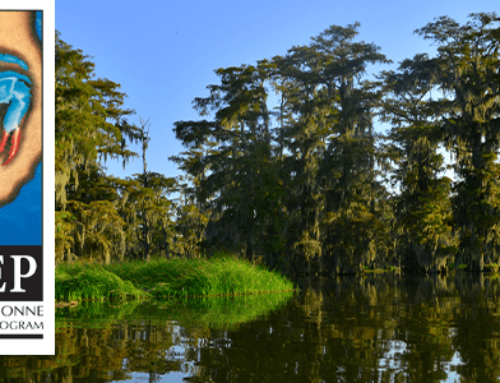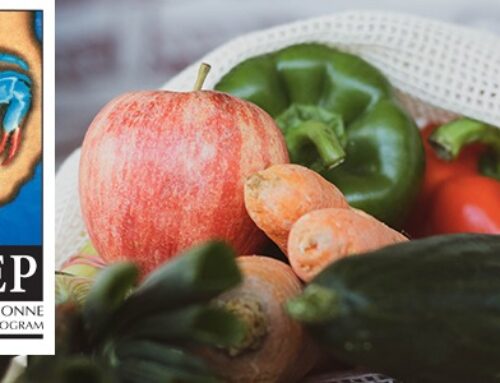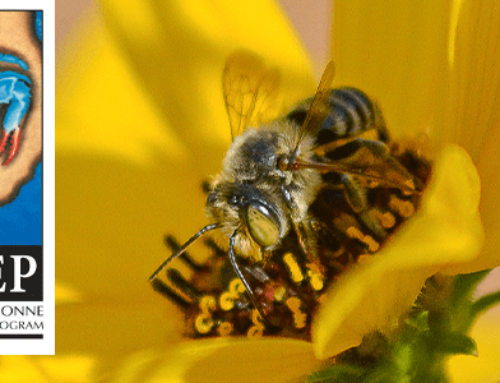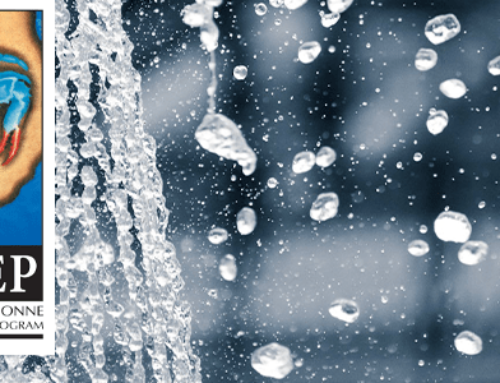
10 Resolutions to Make in 2020 to be a Friend to the Estuary
This year, when you’re tackling your resolutions for the new year, we’re challenging you to include a resolution that will help to protect and preserve our estuary and all of its inhabitants. Here’s how you can help this year:
1. Reduce Single-Use Plastic Consumption
The issue: Did you know that every year, 8 million metric tons of plastic end up in our oceans? Over one million fish, marine mammals, and turtles die every year due to plastic pollution.
The resolution: When dining out, ask the restaurant not to include plastic utensils, straws, or condiments that you don’t plan to use. If you’re ordering take-out, be sure to let the restaurant know you won’t need straws or utensils for dining. When grocery shopping, bring your own shopping totes and produce bags to prevent using single-use plastics that you’ll discard almost immediately.
2. When you can’t reduce, recycle or reuse
The issue: On average, a single person produces approximately 1,606 pounds of trash per year, and a family of four accumulates about 6,531 pounds of trash every year — that’s almost 1.5x the weight of a full-grown giraffe!
The resolution: Avoiding all plastic use and packaging can be a difficult task in today’s times, and isn’t always a realistic feat. When reducing your plastic use isn’t an option, you can opt to recycle or reuse. For more information about recycling in your area, visit Earth911 or download the iRecycle application on your mobile device. When possible, wash and reuse plastic containers for food storage or organization, and recycle or reuse plastic bags.
3. Plant native species for native wildlife
The issue: Native plant and animal species go hand in hand — they are adapted to live together. When there’s a lack of native plant species, the wildlife that relies on them can lose their shelter and food source.
The resolution: By planting native species in your yard or at your business, you provide a habitat for wildlife including butterflies and songbirds. This in turn attracts other pollinating insects that help to keep your landscape and surrounding landscapes healthy by fertilizing the plants. For more information on native species, view our Attracting Wildlife with Native Plants Residents’ Guide.
4. Keeping storm drains clear
The issue: Debris and contaminated water that runs down storm drains directly enters our waterways. This means that animal waste, trash and debris, oil, chemicals and pollutants, and more enter our waterways without ever being filtered out. This can cause oil slicks, dangerous algae blooms, clouded and polluted water, and other serious issues.
The resolution: Thankfully, there are several ways you can help keep the storm drains near your home or business clear — remove grass clippings, leaves and branches from the opening of the drain. Never put common pollutants like pet waste, cigarette butts, bottles/cans, oil or chemicals down the storm drain. Another way you can help is to wash your vehicle at a car wash — car washes are outfitted with treatment systems for their waste water. If you’d prefer to wash at home, wash your vehicle over a grassy area away from any storm drains.
5. Reduce water usage, especially after a big rainfall
The issue: Conserving water has long been a goal of eco-conscious individuals, but did you know that it can directly impact how well your sewage system works, especially after a hard rainfall? The excess water can cause the system to be overworked, which may cause leaks into the ground under your home and in turn into nearby waterways. When this leaked water enters our waterways, it can contaminate the water’s inhabitants, for example: fish. In some cases, humans consuming these contaminated fish can become ill. Additionally, swimming in contaminated water can open up susceptibility to salmonella, Escherichia coli, and other harmful bacteria.
The resolution: There are plenty of ways to reduce water use in your home! Cut down your shower time and choose water conserving shower heads. Always fix leaky faucets or toilets — while the drip might seem minor, a slow drip from a faucet can waste up to 20 gallons a day, and a leaky toilet can leak up to 200 gallons a day. Lastly, make a habit of repurposing water — collect rinse water from produce, or the water that runs while waiting for hot water to come in and use it to water household or outdoor plants, fill pet water bowls, etc.
6. Check and maintain your sewage system
The issue: As mentioned above, a leaky or malfunctioning sewage system can mean bad news for the wildlife in nearby waterways, and the humans who consume or rely on any of the products of our waterways — these broken systems allow large quantities of fecal coliform bacteria into water bodies, leaving dramatic negative effects.
The resolution: Sewage systems shouldn’t be an install-and-forget-it system in your home. Many people don’t pay attention until there’s an issue, but you should be monitoring your own system annually or consider having it inspected by a professional. If your home is in the Bayou Folse Watershed, you may qualify for the Bayou Folse Watershed Home Sewage Assistance Program — if your system is identified as having a broken or malfunctioning sewage system, the program will pay you half of the cost to fix it, up to $1,000. For more information about the program or to see if you qualify, contact Mike with SCPDC at 985-655-1070.
7. Carry your own water bottle
The issue: Did you know that on average it takes 450 years for a plastic bottle to decompose in the environment?! That means it can take5 to 6 times your lifetimeto rid the environment of a bottle you use for mere minutes or hours.
The resolution: Carrying your own refillable water bottle keeps unnecessary single use plastic water bottles out of landfills and recycling centers. By not buying bottled water, you also reduce plastic production at the source. Instead of buying bottled water, consider using a filtered water pitcher or basin in your refrigerator at home, or simply install a water filter device directly on your water tap for filtered water straight out of the faucet.
8. Reduce food waste
The issue: In the United States alone, we discard around 40% of our bought food every year — this food waste more often than not ends up in landfills, which eventually emits the harmful greenhouse gas, methane. In addition, this wasted food also means wasted resources, like the water, energy, and other resources that went into producing the food.
The resolution: The easiest solution is to not over buy. Many big box stores promote buying in bulk to reduce your cost, but often this cost-saving approach doesn’t save at all when the excess food gets discarded. When possible, buy loose ingredients that allow you to purchase only as much as you actually need. Another great solution is to compost discarded produce and scraps, and as a bonus you’ll have nutrient rich fertilizer for your yard for free!
9. Be careful about what you flush down the toilet or your sink drains
The issue: Within our nation, nearly 40% of lakes are too polluted for fishing, swimming, or aquatic life habitats. This pollution is largely due to humans dumping household items down toilets or sink drains that can clog up our sewage treatment systems, and end up in our waterways.
The resolution: Avoid flushing unused medicine, “flushable” baby wipes or makeup wipes, paper towels, dental floss, or any other synthetic items down the toilet. These items won’t decompose, and will clog up your system — human waste and good quality toilet paper are the only things that should go down the drain. Additionally, you should avoid putting coffee grounds and other food waste, any chemicals and oils (including salad dressings), or grease down your sink drain. Always thoroughly wipe off plates and glasses before rinsing them in the sink to avoid sending food scraps and oils/grease down the drain.
10. Reduce energy use
The issue: Traditional power plants burn coal, crude oil, or other fossil fuels to generate electricity — although this is an inexpensive solution, it can be harmful to the environment, particularly for the air quality for humans and wildlife, by releasing carbon dioxide, sulfur dioxide, and nitrogen oxides as a byproduct of production.
The resolution: While the energy industry is taking steps to cleaner energy, you can make a direct impact at home by reducing your power consumption. When buying appliances, tech or other household devices, look for the Energy Star label and choose energy efficient light bulbs. You can also reduce your use by turning off lights or unplugging electronics that aren’t in use — many devices still leach power when plugged in, even if they’re off. The best part? Reducing your energy use won’t only help the environment, it’ll also help you to save money! For more information about eco-friendly energy use, visit Energy Star.






